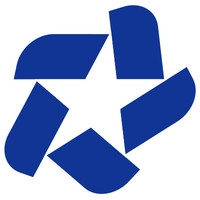Case Studies
How we Eliminated Coding Mistakes on Snack Packages
POSTED 09/02/2021
Accurate date-codes on food products protect consumers and allow for accurate traceability. However, standard text verification systems often struggle to verify date-codes with wavy features, distortions, or non-standard text.
Optical Character Recognition (OCV) inspection systems from EPIC eliminate this problem and can achieve accurate read rates at line speeds in excess of 1,000 products-per-minute.
The Problem
A Fortune 500 snack manufacturer needed to eliminate date-code mistakes to improve traceability and protect consumers
The Process
EPIC used Optical Character Recognition (OCR) technology to design highly accurate QA systems.
The Outcome
99.7% of labeling mistakes were eliminated, and easy-to-deploy systems were rolled out across 15 lines
The Problem
Hard-to-read codes make date-code verification and product tracking a challenge
Accurate date-codes on food products are the key to protecting consumers and allowing manufacturers to track and trace products and lots through distribution chains. Incorrect or unreadable date-codes can not only expose consumer to expired food products, but also make tracking products impossible.
Standard text verification systems are limited in their verification abilities. Any text outside their normal libraries cannot be read, along with wavy, distorted or damaged prints.
With line rates packaging 1,000+ products per minute, this means tens-of-thousands of products can be mislabeled or leave the plant with untraceable date-codes printed on them.
In addition, this problem needed to be addresses across multiple lines in the plant. The solution needed to work for various size packages, fonts, and line rates, and be easy for line operators to install and use.
The Process
Delivering Confidence in Date-Code Accuracy
Using EPIC’s dedicated vision lab and design-build process, our engineers were able to design a custom solution deliver reliable, repeatable, accurate inspection results for 99.7% of printed date-codes. Even hard-to-read codes with wavy features or minor distortions were understood and inspected. The process for delivering successful vision solutions begins with finding a system design that is:
As simple as possible from a programming standpoint. This reduces the chances that mistakes or conflicts in coding will cause the inspection to fail over time.
High contrast– being able to see the defect you are inspecting at a high contrast every time means that you can accurately identify codes and get a highly reliable inspection. Poor lighting, poor contrast, or poor fields of view often cause automated inspection system failures.
Calibrated correctly for field of view and resolution– Many inspections make the mistake of having too large of a field of view, degrading image quality and missing blurred or “un-seeable” defects in the image.
Identifying all the angles and inspections that need to be performed– this is where our vision lab truly helps. By simulating line conditions, including high line speeds, we can determine how many angles need to be covered, how many cameras, how many images to capture per product, etc. in order to provide an accurate inspection.
Custom made for unique production line conditions– Our vision systems usually come mounted on high-quality custom fabricated stands that do not touch the conveyors or other equipment and allow for few or no adjustments by operators so that the system is not effected by line vibrations and cannot be tweaked out of alignment once on the plant floor. In addition, these custom fabricated stands protect cameras and lights from dust, ambient light interference, and other plant-specific challenges.
Seamlessly integrated into your line controls– this means minimal work for line operators at product turnover, as the vision system will automatically know when SKU’s change. In addition, alarms, scrap rates, and predictive maintenance capabilities can be layered into to existing plant controls
The Outcome
0.03 False Failure Rate for 1,000+ Products Per Minute
The EPIC vision system is designed to be an in-line vision inspection system. It uses customized PC software, with Optical Character Verification (OCV) technology to inspect and verify the correct code, the quality, and legibility of the can date code characters.
The OVC vision system uses PLC logic, an encoder and a high speed pneumatic rejecter to track and reject cans that fail inspection. The system was installed several years ago and is still operating reliably today. The impact of getting a reliable, automated quality assurance system included:
- All products leaving the plant were correctly date-coded and easily traceable throughout distribution
- Even hard-to-read codes with wavy features or minor distortions were understood and inspected
- Printing errors are flagged within 10 misprints, instead of thousands of products later
- 15 EPIC OCV. OCR vision systems were subsequently rolled out across a serious of packaging plants to improve world-wide date-coding
Get EPIC Results
Trusted Partner for Lean Improvements

“EPIC Vision is an awesome team to work with. They hear my requirements and provide robust working solutions. They deliver when expected and these installations end up being the lowest maintenance equipment in our factory.”
– Manufacturing Execution System Manager | Multinational Food & Beverage Client

“The innovative solutions built and automated by EPIC far surpass industry and market standards for accucracy and saving us time, money and future redesign. They are a trusted partner for the most innovative and efficient solutions for our manufacturing processes.
– Senior Project Engineer | Fortune 500 Consumer Products Manufacturer



